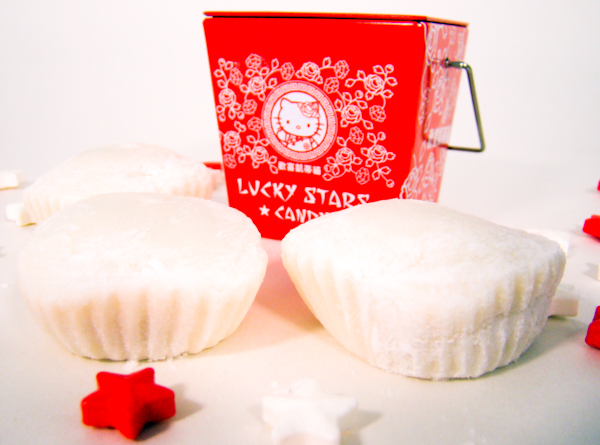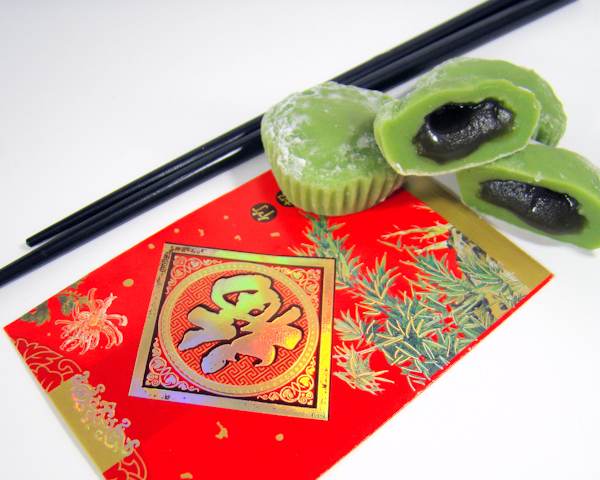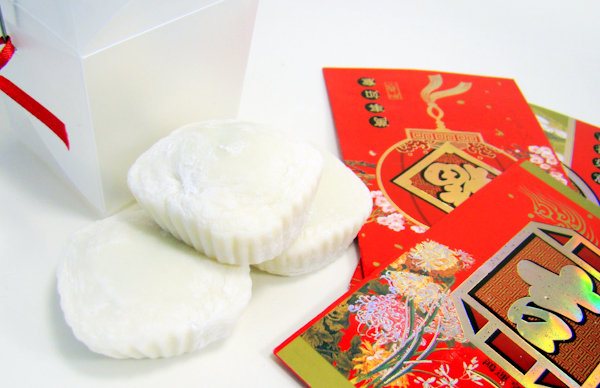
I have vivid memories of running down a street in New York City’s Chinatown. I had just finished eating a wonderful meal and a sweet treat. I was taking in all the sounds (firecrackers mostly) and sights of Chinese New Year’s celebration when suddenly, I wandered into a procession of dragons and drums. I didn’t wander into the main parade, which had already taken place. I had found myself in the middle of a large celebratory crowd. Perhaps it was a school, or a special club, I’m not sure, but what I do know is that they were not stopping their forward momentum for one little girl.
The dragons swirled around me and I was both horrified and excited. When I could no longer see my parents I ran….and apparently I was running in the same direction the procession was heading for the dragons seem to pursue me. I eventually spotted my parents who must have had their eye on me the entire time for they were laughing and enjoying the moment. I rejoined my parents, was handed another sweet treat that I ate as I listened to the firecrackers and watched swirling dragons pass me by.

I still think about this every year during the Lunar New Year. And, it still makes me smile. Many people are, smiling, laughing and celebrating the clocks strike twelve and the 23rd of January arrives. The Lunar New Year refers to the beginning of the year for a multitude of people. Most calendars used by those who celebrate the Lunar New Year are based on the lunar calendar as well as the lunisolar calendar. Following the traditional lunisolar calendars are countries such as China, Vietnam, Mongolia, Korea and Japan.
Most westerners have heard of the Lunar New Year by its most common name: Chinese New Year. It is the most important of the traditional Chinese holidays. In China, it is known as "Spring Festival," the literal translation of the Chinese name 春節 (Pinyin: Chūn Jié), since the spring season in Chinese calendar starts with
lichun, the first solar term in a Chinese calendar year. The festival begins on the first day of the first month in the traditional Chinese calendar and ends with Lantern Festival which is on the 15th day. (In China, the familiar Gregorian calendar is used for day-to-day life. But Chinese calendar dates continue to be used to mark traditional holidays such as the New Year.)
Each year is associated with one of twelve animals in the Chinese zodiac. For 2012, it’s the Year of the Dragon. The dragon is the king of the animal kingdom and represents power. The Dragon is a creature of myth and legend. A symbol of good fortune and a sign of power the Dragon is held in high regard. The Dragon is said to bring good fortune.
To all who are celebrating the New Year we, at myFudo, wish you prosperity.
Japan now celebrates the New Year on January 1st according to the Gregorian calendar. Prior to the Meiji Period, the date of the Japanese New Year was based on the Chinese lunar calendar, as are the contemporary Chinese, Korean, and Vietnamese New Years. However, in 1873, five years after the Meiji Restoration, Japan adopted the Gregorian calendar and the first day of January became the official and cultural New Year's Day.
Our feature recipe is for mochi, which is traditionally enjoyed by the Japanese for the New Year celebration. However, there are Korean and Vietnamese mochi as well.

Mochi Stuffed with Red Bean Paste
Ingredients
1 ½ cup Dango-ko rice flour
1 ½ cup tepid water
2/3 cup confectioner's sugar
1 package or can of sweetened Anko (red bean paste)
tapioca, potato, or corn starch for dusting
Directions
1. In a large bowl, mix the rice flour, sugar, and water until smooth.
2. Pour batter into a shallow microwavable dish and cover with plastic wrap.
Microwave for 4 minutes. Remove dish and pull off plastic to release steam. Stir the mix until smooth again. Microwave again for another 3 to 5 minutes until the top is dry.
3. While the mixture is cooking take the bean paste and roll into small balls. If you are having trouble with the sticky texture dust your hands with cornstarch.
4. Remove mochi dough from the microwave and let cool.
5. To make the mochi take a heaping tablespoon of dough and work it into a ball, then flatten into a circle big enough to cover the bean paste ball. Again, dust your hands in cornstarch to help with stickiness.
6. Place a ball of red bean paste in the middle of the circle and then pull the dough around, pinching the top shut. Smooth the area that was pinched closed.
7. Place mochi into candy “cups” (available at craft stores) for easy gift giving or storage.
8. Place mochi into airtight container or cover tightly with saran wrap to prevent drying out.
 I have vivid memories of running down a street in New York City’s Chinatown. I had just finished eating a wonderful meal and a sweet treat. I was taking in all the sounds (firecrackers mostly) and sights of Chinese New Year’s celebration when suddenly, I wandered into a procession of dragons and drums. I didn’t wander into the main parade, which had already taken place. I had found myself in the middle of a large celebratory crowd. Perhaps it was a school, or a special club, I’m not sure, but what I do know is that they were not stopping their forward momentum for one little girl.
The dragons swirled around me and I was both horrified and excited. When I could no longer see my parents I ran….and apparently I was running in the same direction the procession was heading for the dragons seem to pursue me. I eventually spotted my parents who must have had their eye on me the entire time for they were laughing and enjoying the moment. I rejoined my parents, was handed another sweet treat that I ate as I listened to the firecrackers and watched swirling dragons pass me by.
I have vivid memories of running down a street in New York City’s Chinatown. I had just finished eating a wonderful meal and a sweet treat. I was taking in all the sounds (firecrackers mostly) and sights of Chinese New Year’s celebration when suddenly, I wandered into a procession of dragons and drums. I didn’t wander into the main parade, which had already taken place. I had found myself in the middle of a large celebratory crowd. Perhaps it was a school, or a special club, I’m not sure, but what I do know is that they were not stopping their forward momentum for one little girl.
The dragons swirled around me and I was both horrified and excited. When I could no longer see my parents I ran….and apparently I was running in the same direction the procession was heading for the dragons seem to pursue me. I eventually spotted my parents who must have had their eye on me the entire time for they were laughing and enjoying the moment. I rejoined my parents, was handed another sweet treat that I ate as I listened to the firecrackers and watched swirling dragons pass me by.
 I still think about this every year during the Lunar New Year. And, it still makes me smile. Many people are, smiling, laughing and celebrating the clocks strike twelve and the 23rd of January arrives. The Lunar New Year refers to the beginning of the year for a multitude of people. Most calendars used by those who celebrate the Lunar New Year are based on the lunar calendar as well as the lunisolar calendar. Following the traditional lunisolar calendars are countries such as China, Vietnam, Mongolia, Korea and Japan.
Most westerners have heard of the Lunar New Year by its most common name: Chinese New Year. It is the most important of the traditional Chinese holidays. In China, it is known as "Spring Festival," the literal translation of the Chinese name 春節 (Pinyin: Chūn Jié), since the spring season in Chinese calendar starts with lichun, the first solar term in a Chinese calendar year. The festival begins on the first day of the first month in the traditional Chinese calendar and ends with Lantern Festival which is on the 15th day. (In China, the familiar Gregorian calendar is used for day-to-day life. But Chinese calendar dates continue to be used to mark traditional holidays such as the New Year.)
Each year is associated with one of twelve animals in the Chinese zodiac. For 2012, it’s the Year of the Dragon. The dragon is the king of the animal kingdom and represents power. The Dragon is a creature of myth and legend. A symbol of good fortune and a sign of power the Dragon is held in high regard. The Dragon is said to bring good fortune.
To all who are celebrating the New Year we, at myFudo, wish you prosperity.
Japan now celebrates the New Year on January 1st according to the Gregorian calendar. Prior to the Meiji Period, the date of the Japanese New Year was based on the Chinese lunar calendar, as are the contemporary Chinese, Korean, and Vietnamese New Years. However, in 1873, five years after the Meiji Restoration, Japan adopted the Gregorian calendar and the first day of January became the official and cultural New Year's Day.
Our feature recipe is for mochi, which is traditionally enjoyed by the Japanese for the New Year celebration. However, there are Korean and Vietnamese mochi as well.
I still think about this every year during the Lunar New Year. And, it still makes me smile. Many people are, smiling, laughing and celebrating the clocks strike twelve and the 23rd of January arrives. The Lunar New Year refers to the beginning of the year for a multitude of people. Most calendars used by those who celebrate the Lunar New Year are based on the lunar calendar as well as the lunisolar calendar. Following the traditional lunisolar calendars are countries such as China, Vietnam, Mongolia, Korea and Japan.
Most westerners have heard of the Lunar New Year by its most common name: Chinese New Year. It is the most important of the traditional Chinese holidays. In China, it is known as "Spring Festival," the literal translation of the Chinese name 春節 (Pinyin: Chūn Jié), since the spring season in Chinese calendar starts with lichun, the first solar term in a Chinese calendar year. The festival begins on the first day of the first month in the traditional Chinese calendar and ends with Lantern Festival which is on the 15th day. (In China, the familiar Gregorian calendar is used for day-to-day life. But Chinese calendar dates continue to be used to mark traditional holidays such as the New Year.)
Each year is associated with one of twelve animals in the Chinese zodiac. For 2012, it’s the Year of the Dragon. The dragon is the king of the animal kingdom and represents power. The Dragon is a creature of myth and legend. A symbol of good fortune and a sign of power the Dragon is held in high regard. The Dragon is said to bring good fortune.
To all who are celebrating the New Year we, at myFudo, wish you prosperity.
Japan now celebrates the New Year on January 1st according to the Gregorian calendar. Prior to the Meiji Period, the date of the Japanese New Year was based on the Chinese lunar calendar, as are the contemporary Chinese, Korean, and Vietnamese New Years. However, in 1873, five years after the Meiji Restoration, Japan adopted the Gregorian calendar and the first day of January became the official and cultural New Year's Day.
Our feature recipe is for mochi, which is traditionally enjoyed by the Japanese for the New Year celebration. However, there are Korean and Vietnamese mochi as well.








Suzi
January 24, 2012 at 9:43 am //
Oh what a cool and maybe frightening experience for you. I have been wondering how to make mochi. Is it always a sweet treat or can you stuff it with other ingredients. Also what kind of bean paste is it like miso and are the beans aduki. Great post, buzzed you.
myfudo
January 24, 2012 at 10:45 am //
Hi Suzi, Mochi itself is can be made from rice flour, and it can be eaten with a savory dish. The most favorites of having mochi as a savory delight would be (and our favorite) is pop some mochi in the toaster oven, http://www.amazon.com/Taimatsu-Mochi-Bijin-Rice-Cakes/dp/B002WFZPQU/ref=sr_1_8?s=grocery&ie=UTF8&qid=1327369049&sr=1-8
They come in a bag, individually wrapped, you can find the Japanese mochi in most Asian markets (isle perhaps). (Kakumochi) http://en.wikipedia.org/wiki/Zōni Zoni Mochi.
The way we prepare it in Japan is we place the mochi in the toaster oven, it’s gets crunchy on the outside warm and soft on the inside, and put a dabble of soy sauce/butter when finished, some use cheese, some deep fry it, some just bake it and add it to soups, etc. If you can’t find the package in your local grocer, they will most likely have it at the Japanese supermarket.
Magic of Spice
January 24, 2012 at 12:52 pm //
What a delightful post! Although I can imagine how frightened you were, you were safely within your parents reach and a lasting memory was born. These are wonderful and I adore red bean paste treats, gorgeous as well!
Happy Lunar New Year!
Charissa
January 25, 2012 at 2:07 am //
Your recipes are always so refreshingly creative!
myfudo
January 25, 2012 at 8:54 am //
Thank you, that is such a nice and wonderful compliment.
Peggy
January 25, 2012 at 8:33 pm //
what a cute childhood memory! These daifuku are a great way to celebrate the Chinese New Year =)
Kiri W.
January 25, 2012 at 11:22 pm //
I love daifuku – I fell in love at age 12 and it’s still the one certain thing I’ll splurge on when I go to a Japanese grocery store. So very, very tasty :)